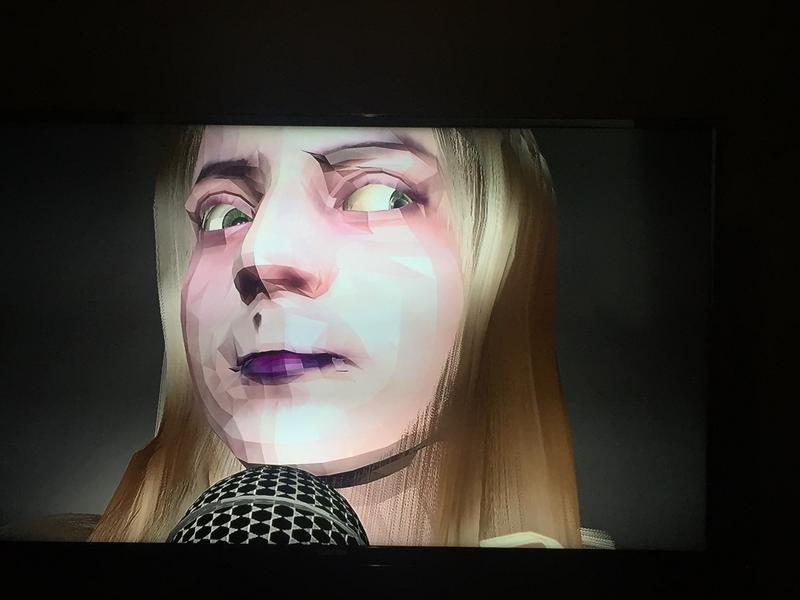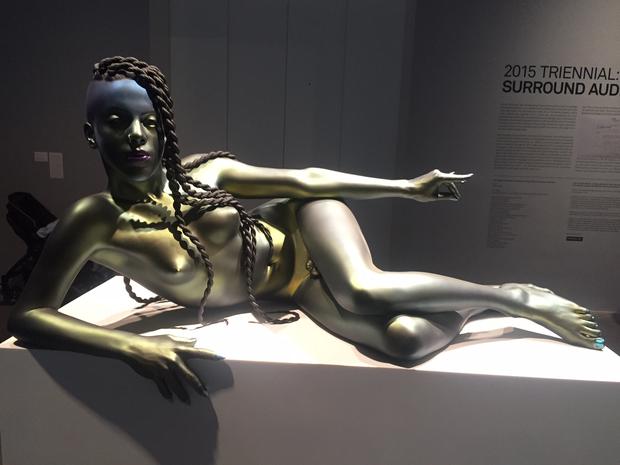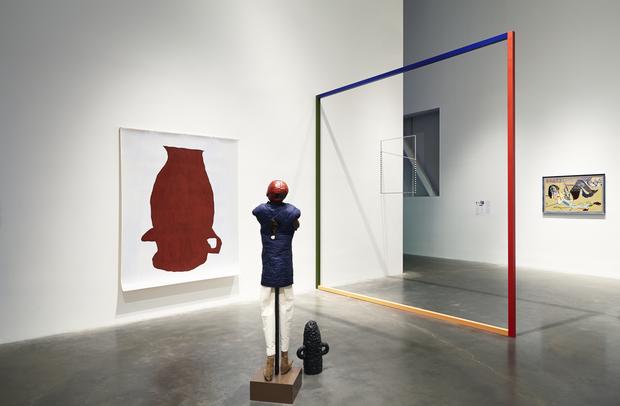
Media guru Marshall McLuhan once said the medium is the message. But now the medium is also the source of misery. At least that's how it seems, in the work of early-career artists featured in the New Museum's much-publicized Triennial exhibition.
Entitled "Surround Audience," it features 51 artists from more than 25 countries who are reflecting mostly on the digital universe. "It describes a world where we are never alone, because we are constantly surrounded by images and technology," explains WNYC's art critic Deborah Solomon in this interview.
Solomon confesses she was dreading the show, thinking she would see a lot of screens and feel nostalgic for oil paintings, but she said the Triennial is better than she expected. "It has some serious themes at its center. The main one being surveillance and the degree to which technology has ended privacy to some degree in our lives," she said.
Some of the pieces include Josh Kline's "Freedom," which mixes a virtual speech by President Barack Obama with soldiers who look like teletubbies, and carry in their bellies videos from Occupy Wall Street protesters. Kiluanji Kia Henda comments on frantic pace of construction in Angola with photographs in the desert. Authenticity, originality and authorship drive the image mash-up video piece of Berlin-based Oliver Laric. Czech artist Eva Kotatkova presents an installations with live models that comments on the physical and mental constrains that limit the body in the world.
Solomon said for her the revelation was the piece "It's so important to seem wonderful II," by Los Angeles-based Casey Jane Ellison. Her video and sculpture piece uses avatar and humor to talk about the self and technology, and it includes several versions of her, even one in a USB drive. "Will the real Casey Jane Ellison please stand up?" asks Solomon. "I think that is somehow how we feel everyday in this culture. Do we exist or are our lives on the screen more authentic than what takes place everyday in our kitchen?"
Solomon also highlights the work of Avery Singer, who does large scale paintings of robots stuck in doorways and window frames. "She seems to be saying there is no escape from the frames that we have created around ourselves," she said.
For Solomon, the question is: "Do we need art to make these points about surveillance? Is art the best medium to convey that message?" Join the conversation with a comment.


